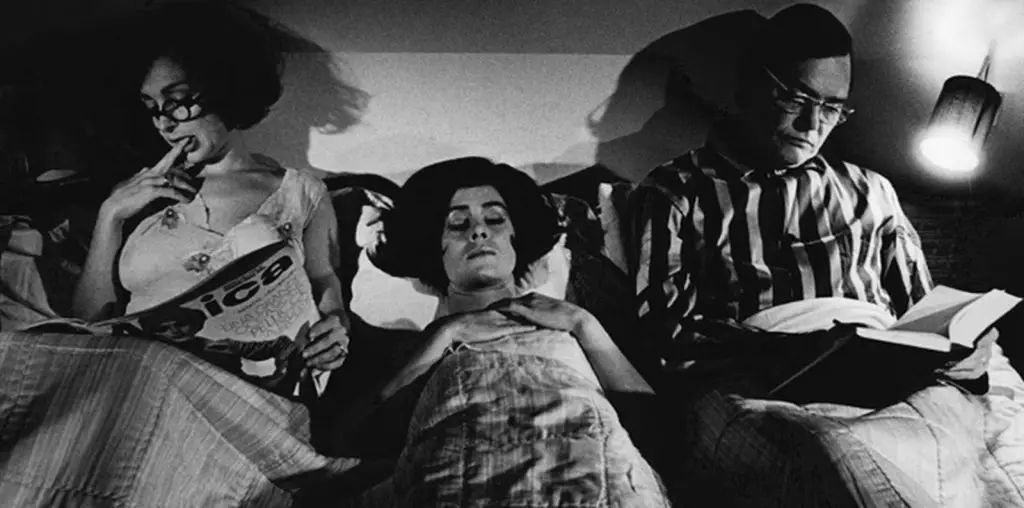
This video is a portrait of an empty circular parking garage. The footage is shown from the point of view of the side of a car, winding it’s way down six levels. The screen is divided into three panels, each showing the journey from a different vantage point, but all sharing the same relentlessly smooth movement of continual circular descent. Sometimes the camera points outward to the surrounding landscape, indistinctly seen, but more often it points inward to the garage’s hub. The soundtrack mixes the loud, echoing sounds of driving with the angst-ridden, modernist orchestral music of Giacinto Scelsi and Carles Santos. Dramatically, when the video ends, we see a single car parked at the bottom level.
The visual presentation of this video and the use of music do indeed bring out the drama and mythical resonance inherent in the structure of the garage, stripped of it’s usual function of temporarily housing cars. The feeling of a relentlessly spiraling descent, constantly focusing on a central emptiness, is reminiscent of many large, mythical themes. (Although not particularly, to my mind, that of Ulysses’ return to his homeland.)
The powerful potential of the imagery, kinetic motion, and music in this film, and the dramatic potential of the final shot of the lone car, are riveting to watch, but still feel incomplete, as if they merely formed the basis for a potentially more complex and interesting film. The greatest masterpieces are generally made not from one great idea which has been beautifully realized, but only when two or more great ideas are stacked up, creating a complex, multi-layered reality. “Odysseus in Ithaca” strikes me as being the first of these layers. If a few more equally striking ideas had been allowed free play throughout the work, Rose would have achieved a truly magnificent film.

